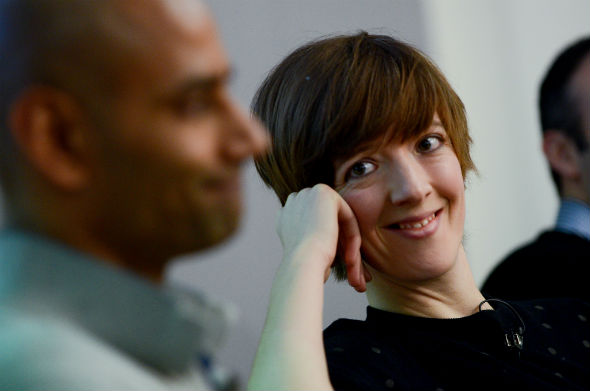Video explainers, animation, concise clips and games are just some of the techniques being used by public broadcasters in the UK and the States to bring new life to audio and make it more engaging and socially shareable.
Representatives from NPR in the States and BBC Newsbeat in the UK shared some of their experiences at the news:rewired conference, in London today, on how best to overcome the problem of audio being difficult to find and share online.
Eric Athas, senior digital news specialist at NPR Digital Services, said: “Audio is trapped. You might hear an incredible moment – it’s really hard to take that moment and share it with people.”
NPR has been experimenting with how best to present audio online – with clear headlines and extracts that showcase why people should listen.
Member stations created 50 packages using these guidelines, which accumulated about 500,000 listens in total, over 100,000 social media shares.
Athas said of packaging:
Normally, when people come to a story that has audio the rate at which they listen to that is very low. For these the rates at which people listened was about five times higher. We were really pleased with that. People were finding these things on Facebook, clicking and listening and going back to Facebook and talking about what they heard.
Here are his four types of audio that people share:
Audio explainers: “The practice of taking a news story and making sense of it for people. They teach you something through a simple, quick and interesting audio clip. Do it really concisely – a nice listening experience.”
Whoa! sounds: “These should make you react that way: whoa. This category captures the fascinating sound of a place, a person, wildlife or something else. It creates a unique listening experience that wouldn’t work visually.”
Storytellers: “People have amazing stories to tell. The way the stories is told is captivating. Incredible stories told by people who had amazing experiences.”
Snappy reviews: “Tell the listener what something’s all about – a book, a movie, a local attraction. Do it in a concise audio clip. ”
In the UK, the BBC’s youth news brand Newsbeat, which is targeted at 16 to 25-year-olds, is preparing a website relaunch for late March that aims to make multi-platform storytelling easier.
Newsbeat assistant editor Anna Doble, who was hired from Channel 4 to oversee the move, said her brief was to “turn radio news into mobile-focused digital news”.
A new responsive website and app are in the pipeline, with audio embedded in pages. The team is also experimenting with simple video explainers and the use of messaging apps such as WhatsApp and Snapchat.
Away from the traditional broadcast media, The Economist is one print outlet that is innovating with audio, with 2.5 million podcast downloads a month and a paid-for daily radio show.
The title’s senior vice-president of new business incubation and innovation, Neelay Patel, said he had learnt that audio consumers were “remarkably loyal and committed. It is not a transient crowd. There’s clearly a willingness to pay. That’s a pretty big deal for us.”
He added:
We need to bring all our audio content together – and make Economist Radio more like a radio. We want to look for more interesting audio experiences. We also want to experiment with the format. Listeners form a very deep connection not just with the content but the way the content is delivered and with the hosts.

